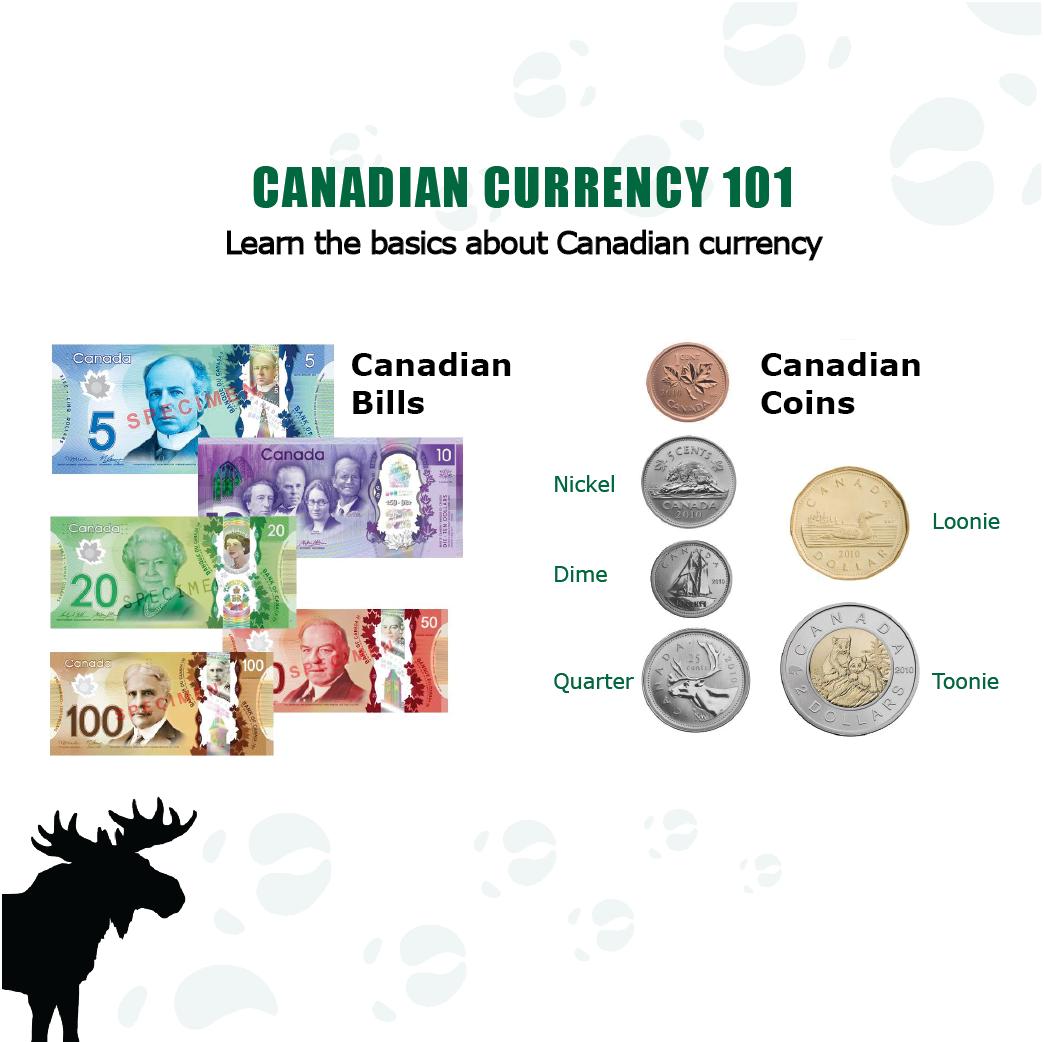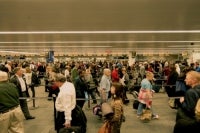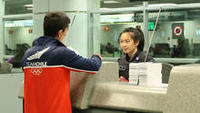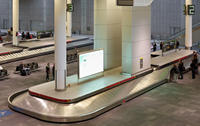Learn about travel insurance and what to do when you arrive at the Toronto Pearson Airport. We will also tell you about Canadian currency and what to bring with you to Canada.
COVID-19 information for travellers
Vaccine mandates, random testing, and quarantine requirements for international travellers are suspended. Mandatory use of the ArriveCan app is also suspended. This means you do not need to be vaccinated, provide a negative COVID test, or quarantine upon arrival in Canada. You are also not required to wear a mask on any flight, international or domestic, that is departing from a Canadian airport. International travellers are no longer required to use the ArriveCan app when entering Canada.
Please check the Government of Canada website for the most up-to-date travel information.
If you have any immigration-related questions, please contact Louann Nhan, an Immigration Consultant with the UWaterloo Student Success Office, at lnhan@uwaterloo.ca .
Travel Insurance
UHIP is your mandatory health insurance plan for when you are studying at Renison for longer than 21 days. UHIP does not cover emergency and health expenses while you are travelling to and from Canada.
We strongly recommend that you buy travel insurance to help cover unexpected costs while you are travelling to Canada (such as cancelled flights and emergency medical costs). UHIP only covers health treatment costs while you are in Canada and studying at Renison.
Travel insurance gives assistance by providing:
- Unforeseen travel misfortunes such as trip cancellation and trip interruption insurance
- Emergency medical assistance (during the period while are you travelling to Canada and are not covered by UHIP)
- Baggage and personal items protection
- Accidental death insurance
Travel insurance is sold in packages, combining various categories of coverage. Do your research and determine what you need and what you do not need.
Your UHIP insurance is only valid while you are studying at Renison or the University of Waterloo. Your insurance is no longer valid when you finish your studies. You should get travel insurance if you decide to travel in Canada for any length of time before or after you study at Renison.
You can buy travel insurance from the airline you are travelling with, a travel agency, your credit card provider, or other online outlets. You can explore and compare travel insurance options at insuremytrip.com.
Arriving in Canada at Toronto Pearson Airport (YYZ)
If you cannot view this video on YouTube, view the video through our alternative link.
Transportation to Waterloo
Toronto Pearson Airport is located approximately 100 kilometres east of Renison University College in Waterloo. As such, there are a few different options for travelling to the Kitchener-Waterloo area from Pearson Airport.
The Ground Transportation Desk at Toronto Pearson Airport can assist with various ground transport options to get you from the Airport to Kitchener-Waterloo. Information counters are located on the Ground Level of Terminal 1 and on the Arrivals Level of Terminal 3.
Some of your options are listed below:
Weather and What to Bring to Canada
Southern Ontario experiences four distinct seasons: fall, winter, spring, and summer. Fall (also known as autumn) usually brings a mix of cool, rainy days and mild, sunny days. Freezing rain and flurries (small snowflakes) are not uncommon in late fall. Winter brings lots of snow, ice, and cold temperatures; dressing in warm, waterproof clothing will help you enjoy the winter weather! Spring sees warmer weather slowly return to Southern Ontario, but this time of transition can see a warm, sunny day quickly followed by cold or wet weather, so keep your jacket handy. Summer brings lots of warmth and sunshine, but note that many buildings will be air-conditioned, so bring a sweater if you get cold easily.
To get regular weather updates and severe weather notifications, you can download the Government of Canada's WeatherCAN app for your iOS or Android device, and select "Kitchener-Waterloo, Ontario" as the location. You can also visit the Kitchener-Waterloo weather website.
Average temperatures for every season in Waterloo can be found below (all units in Celsius). Remember, these temperatures are averages; some days may be warmer, while other days may be cooler:
| January | February | March | April | |
| Avg. High | -3° C | -1° C | 4° C | 11° C |
| Avg. Low | -10° C | -10° C | -6° C | 1° C |
| May | June | July | Aug. | |
| Avg. High | 18° C | 24° C | 26° C | 25° C |
| Avg. Low | 6° C | 12° C | 14° C | 13° C |
| September | October | November | December | |
| Avg. High | 20° C | 14° C | 6° C | 0° C |
| Avg. Low | 9° C | 3° C | -1° C | -7° C |
Items you should pack
-
Passport, visa, study permit and/or other required documents to present when entering Canada
- Items that remind you of your home country
(eg. pictures, music, a flag, or family recipes) - Medications
- An electrical converter: electrical wall sockets in Canada operate at 120 volts and 60 hertz, and accept "NEMA" plugs (the same as the United States and parts of Latin America). You will need a converter for your electrical appliances if they operate on a different voltage or use a different type of plug.
- Toiletries
- Weather-appropriate clothing
There is no dress code at Renison or the University of Waterloo. Students usually dress casually in comfortable and practical clothes. Bring whatever clothing you like, in the style that you are used to wearing.
If you’re in a co-op program, you’ll need additional business attire for interviews and work terms.
We recommend that you bring different types of clothing to suit the weather you will encounter in Southern Ontario:
- Winter: Heavy jackets, scarves, gloves, hats, and waterproof boots are essential.
- Fall and Spring: Sweaters and light, waterproof jackets are useful for cool and rainy days. Rain boots and umbrellas are also helpful.
- Summer: Lightweight clothing is best, but a light jacket or sweater will come in handy for cool evenings or air-conditioned buildings.
Adapted from: International Student Guide, University of Waterloo
Understanding Canadian Currency
Canada’s currency is the Canadian dollar ($). One dollar is divided into one hundred cents (¢). Most businesses and restaurants accept credit cards and cash (coins and bills) for payment. Cash in Canadian dollars can be obtained from a bank or currency exchange. If you pay for something with cash, your total will be rounded to the nearest $0.05, as Canada no longer uses one-cent coins.
Canadian dollar bills (bank notes): $5, $10, $20, $50 and $100.
Canadian coins:
Nickel = $0.05; Dime = $0.10; Quarter = $0.25; Loonie = $1.00
Toonie = $2.00
 If you do not have any Canadian cash, many businesses will accept Visa and MasterCard credit cards. Some businesses will also accept Visa and MasterCard-branded debit cards from foreign banks, but this is not as common compared to credit cards. Contact the business you plan on visiting by phone ahead of time if you are not sure what payment methods they will accept.
If you do not have any Canadian cash, many businesses will accept Visa and MasterCard credit cards. Some businesses will also accept Visa and MasterCard-branded debit cards from foreign banks, but this is not as common compared to credit cards. Contact the business you plan on visiting by phone ahead of time if you are not sure what payment methods they will accept.
Most goods and services in Ontario will be charged a government sales tax of 13%; this tax is called the HST. The HST is not usually advertised in the price of an item; this extra charge will be added to your total bill at a store or restaurant.



 Step Two
Step Two Step Three
Step Three Once you have arrived at Customs/Passport Control, wait patiently in line and follow the instructions given to you. One line will be for Canadian and U.S. citizens. The other line will be for citizens of other countries. Stand in the line that is appropriate for you.
Once you have arrived at Customs/Passport Control, wait patiently in line and follow the instructions given to you. One line will be for Canadian and U.S. citizens. The other line will be for citizens of other countries. Stand in the line that is appropriate for you.  Depending on the terminal you arrive in, you may be directed to an eGate or Primary Inspection Kiosk (PIK) to scan your passport and complete your customs declaration. Follow the instructions on the screen, and speak to a staff member if you need help. You may be asked to speak to a customs and immigration officer. They will review your passport and other documents, and ask you some questions about your purpose for travelling to Canada. Have your Renison or University of Waterloo Letter of Acceptance ready to show the officer.
Depending on the terminal you arrive in, you may be directed to an eGate or Primary Inspection Kiosk (PIK) to scan your passport and complete your customs declaration. Follow the instructions on the screen, and speak to a staff member if you need help. You may be asked to speak to a customs and immigration officer. They will review your passport and other documents, and ask you some questions about your purpose for travelling to Canada. Have your Renison or University of Waterloo Letter of Acceptance ready to show the officer. Once you have cleared passport control, you will go to the "Baggage" area to pick up your luggage and suitcases. After getting your luggage, you will line up again and another customs officer will collect your customs declaration card before allowing you to leave the secure customs area.
Once you have cleared passport control, you will go to the "Baggage" area to pick up your luggage and suitcases. After getting your luggage, you will line up again and another customs officer will collect your customs declaration card before allowing you to leave the secure customs area.



